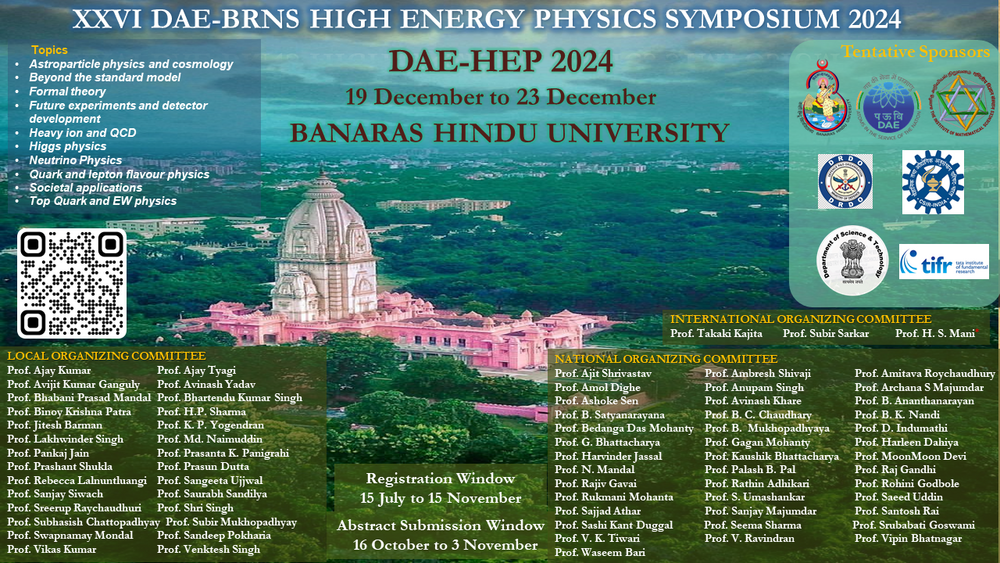Speaker
Description
The ideal hadron resonance gas (HRG) model, which considers a system of non-interacting point size hadrons and resonances, is successful in explaining the particle ratios observed in high-energy heavy ion collisions. It also agrees with thermodynamic results from lattice QCD (lQCD) calculations up to a temperature of $T\sim150$ MeV. However, the model fails to explain the higher-order conserved charge fluctuation calculations from lQCD results as well as from experiments. The conserved charge fluctuations are, however, sensitive to the second-order phase transition. Therefore, it is an important parameter to study the possible critical point in the QCD phase diagram. The inclusion of van der Waals (VDW) interaction extends the applicability of the hadron gas model to high temperature ($T$) and baryochemical potential ($\mu_B$) region. However, it still remains far from explaining the experimental data on higher-order fluctuations. To further improve the model, we argue that the VDW parameters $a$ and $b$ must be taken into consideration. We employ a $\chi^2$ minimization technique to fit thermodynamic quantities obtained in our model to lQCD results at different $\mu_B/T$ values to obtain different $a$ and $b$ values for each case of $\mu_B/T$. This allows us to parameterized the VDW parameters as a function of $T$ and $\mu_B$. Hence, we construct a modified VDWHRG (MVDWHRG) model where the parameters are no longer constants and vary as a function of $T$ and $\mu_B$. We use a simple parametrization to relate $T$ and $\mu_B$ as a function of the centre of mass energy ($\sqrt{s_{NN}}$). We then calculate the net-proton number cumulants as a function of energy in the ideal HRG, VDWHRG as well as in the modified VDWHRG and compare the results with experimental data. We observe that our results from MVDWHRG are in reasonable agreement with the experimental data.
| Field of contribution | Phenomenology |
|---|

